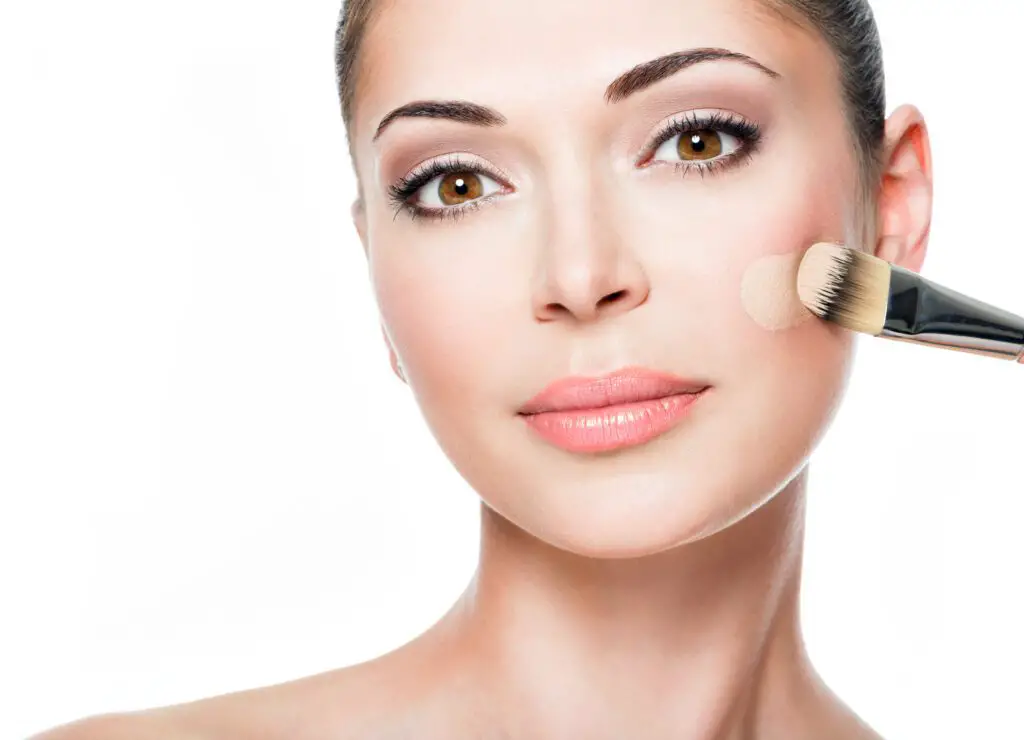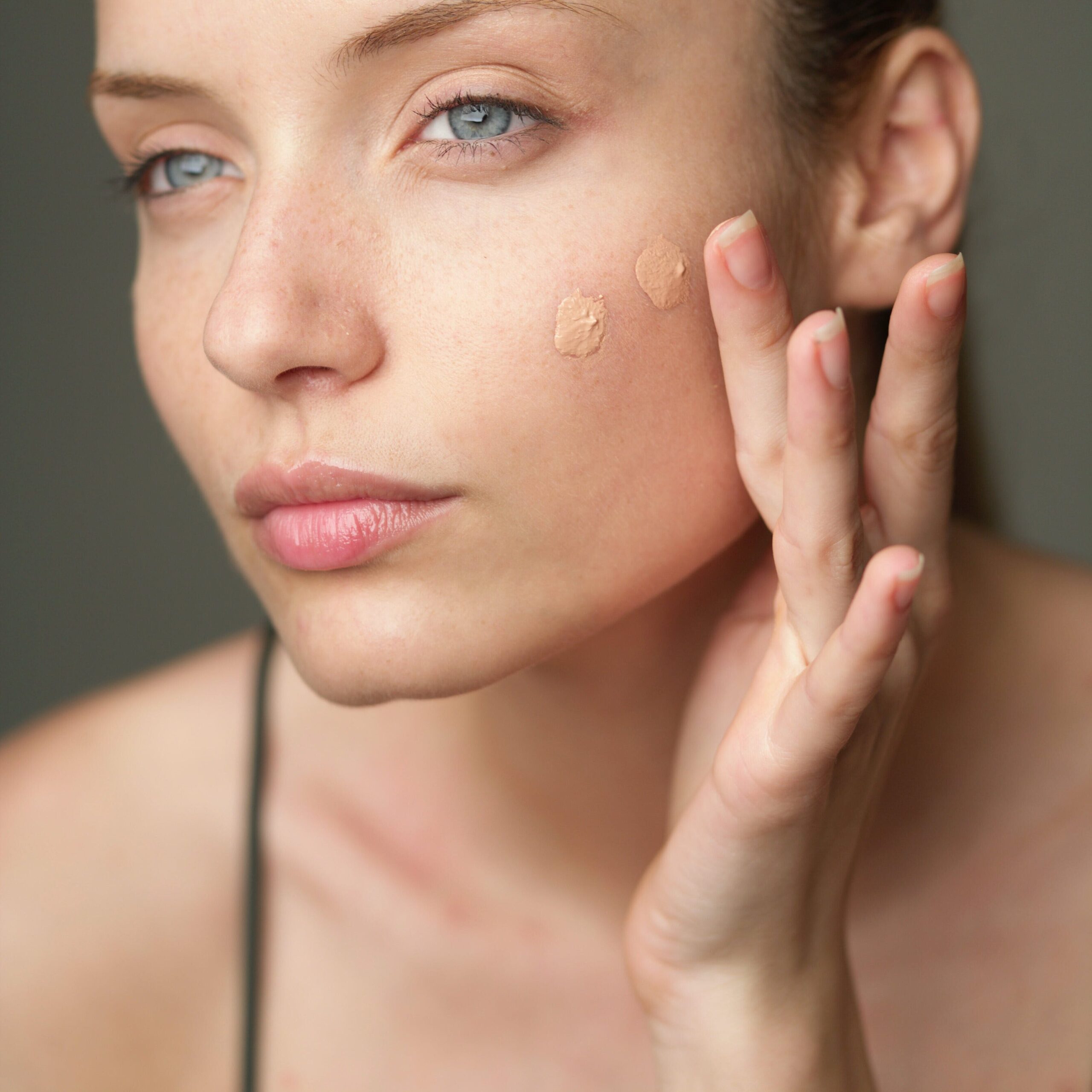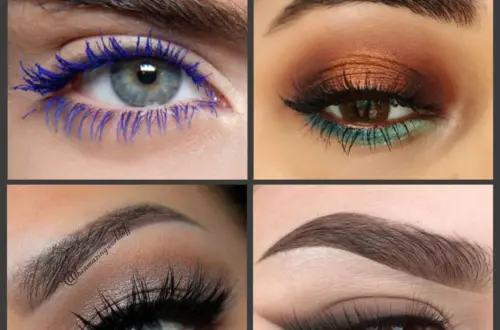How to Apply Foundation for A Flawless Look
Foundation is essential in achieving a flawless and glowing skin complexion. It provides the base for the rest of your makeup, helping to even out skin tone, hide any imperfections, and create a smooth canvas for other products.
However, applying foundation correctly can sometimes be a daunting task. In this post, we will explore the step-by-step guide on how to apply foundation for a flawless look.
Busy? Save this pin for later.

1. Prepare Your Skin
Before applying foundation, it is crucial to prepare your skin properly. Follow these steps to ensure the best results:
Clean and Moisturize
Start by washing your face using a gentle cleanser that suits your unique skin type. This will remove any dirt, excess oil, or makeup residue that may be present on your skin.

Cleansing is essential as it helps to create a clean canvas for your foundation and ensures that it adheres properly to your skin.
After cleansing, apply a moisturizer that suits your skin’s needs. This step will hydrate your skin and create a smoother base for your foundation.
Moisturizing is particularly important for those with dehydrated skin as it helps to prevent your foundation from clinging to dry patches and flaking throughout the day.
Prime Your Skin
If you have specific skin concerns, such as large pores or excessive oiliness, consider using a primer. Primers can help to fill in pores, control oil, and prolong the wear of your foundation.

Apply a small amount of primer all over your face, focusing on problematic areas. Primers not only create a smooth surface for your foundation but also improve its longevity.
They create a barrier between your skin and foundation, preventing it from being absorbed into the skin and ensuring that it stays in place throughout the day. Additionally, primers can help to blur imperfections and create a more even skin texture.
Exfoliate Your Skin
After cleansing and moisturizing, exfoliating your skin regularly can also help to prepare it for foundation application.

Exfoliation removes dead skin cells, revealing a brighter and smoother complexion. This not only improves the application of the foundation but also helps it to last longer.
Use a gentle exfoliator once or twice a week, or opt for chemical exfoliants like alpha hydroxy acids (AHAs) or beta hydroxy acids (BHAs).
These ingredients work to dissolve the bonds between dead skin cells, effectively sloughing them off and revealing fresh, radiant skin.
You Might Also Like: 9 Common Makeup Mistakes To Avoid At All Costs
2. Choose the Right Foundation
Selecting the right foundation shade and formula is crucial for achieving a flawless finish. Consider the following factors when choosing your foundation:

Shade Matching
To find the perfect shade, test the foundation on your jawline or wrist. The shade should seamlessly blend into your skin without leaving any visible lines.
If possible, test the foundation in natural light to ensure accurate color matching. It’s important to choose a foundation shade that matches your skin tone to avoid any noticeable contrast or “mask-like” appearance.
If you’re having trouble finding the right shade, consider visiting a beauty counter or consulting with a professional makeup artist who can assist you in finding the perfect match.
Formula Selection
Foundations come in various formulas, such as liquid, cream, powder, or stick. Choose a formula that suits your skin type and desired finish.
For oily skin, opt for oil-free or matte foundations, while dry skin may benefit from hydrating or dewy formulas. If you have combination skin, you can choose a foundation that offers a balanced finish.
Consider the coverage level you prefer as well, whether it’s sheer, medium, or full coverage. Sheer foundations provide a more natural look, while full coverage foundations offer a more flawless and perfect finish. Experiment with different formulas and finishes to find the one that works best for you.
Undertone Consideration
It’s important to consider your undertone when choosing a foundation. Undertone refers to the underlying color that is present in your skin, and it can be categorized as warm, cool, or neutral.
Warm undertones have hints of yellow, cool undertones have hints of pink or blue, and neutral undertones have a mix of both.
Understanding your undertone can help you select a foundation that complements your natural skin tone and enhances your complexion.
To determine your undertone, examine the veins on the inside of your wrist. If they look green, you likely have warm undertones, while blue veins indicate cool undertones. If you can’t pinpoint whether your veins appear more green or blue, you may have a neutral undertone.
3. Apply Foundation
Once your skin is prepped, it’s time to apply the foundation. Follow these steps for a flawless application:
Dotting Method
Using a foundation brush, sponge, or clean fingertips, dot the foundation onto your forehead, cheeks, chin, and nose. Start with a small amount and gradually build up the coverage.

This technique ensures even distribution and avoids applying too much product at once. Dotting the foundation allows you to control the amount of coverage you desire and ensures that it is evenly spread across your face.
It also helps to prevent any streaking or patchiness that can occur when using too much product in one area.
Blend, Blend, Blend
Blend the foundation evenly into your skin using your preferred tool. Make sure to blend the foundation into your hairline, ears, and neck for a seamless finish.

Use gentle, upward strokes to avoid streaks and ensure a natural-looking result. Blending is key to achieving a flawless application.
It helps to eliminate any harsh lines or demarcations, creating a smooth and even finish. Take your time while blending and ensure that there are no visible lines or uneven patches.
Pay extra attention to blending around the jawline and neck to avoid any noticeable color differences.
Concealer for Extra Coverage
If you have any blemishes, dark spots, or under-eye circles that need extra coverage, apply a concealer after foundation.

Use a concealer brush or your fingertips to dab a small amount of concealer onto the targeted areas. Gently blend the edges for a seamless transition with the foundation.
Concealers are designed to provide additional coverage to specific areas of concern. They are typically heavier in consistency and offer more pigmentation than foundation.
Dabbing the concealer onto the targeted areas and blending it into the foundation ensures a seamless and natural result. Be sure to choose a concealer shade that matches your foundation to maintain a cohesive look.
You Might Also Like: 5 Simple Ways to Find the Perfect Foundation for Your Skin Tone
4. Set Your Foundation
To ensure your foundation stays in place all day, setting it with a powder is essential. Follow these steps:
Choose the Right Powder
Select a loose or pressed powder that matches your skin tone. Avoid powders with excessive shimmer or glitter, as they can emphasize imperfections. For oily skin, opt for oil-absorbing or mattifying powders.

The right powder helps to lock in your foundation, control shine, and prolong its wear. It also helps to minimize the appearance of pores and fine lines.
When choosing a powder, consider your skin type and desired finish. If you have dry skin, opt for a finely milled powder that adds a subtle glow without drying out your skin. For oily skin, choose a powder that offers oil-absorbing properties to keep shine at bay.
Apply Powder
Using a fluffy powder brush, lightly dust the powder all over your face. Focus on areas prone to shine, such as the forehead, nose, and chin.
Be sure to blend the powder seamlessly into your foundation for a natural look. The application of powder helps to set your foundation and prevent it from transferring or fading throughout the day.
Lightly dust the powder in a pressing motion to avoid disturbing the foundation underneath. Focus on areas that tend to get oily or shiny, as these are the areas that are most prone to makeup breakdown. Blending the powder into the foundation ensures a seamless finish and prevents any visible demarcation.
5. Maintain Your Flawless Look
To maintain your flawless foundation throughout the day, consider the following tips:

- Blotting sheets or a mattifying powder can help control excess shine throughout the day. These products can be used to absorb any excess oil that may accumulate on the skin, helping to maintain a matte finish and prevent any unwanted shine. Simply press the blotting sheets onto the skin or lightly dust the mattifying powder over areas that appear shiny.
- Avoid touching your face, as this can transfer oils and disrupt the foundation. Touching your face throughout the day can transfer oils, dirt, and bacteria onto your skin, which can cause your foundation to break down or become patchy. Try to resist touching your face, especially if your hands are not clean.
- Set your makeup with a setting spray for extra longevity. Setting sprays are designed to lock in your makeup and help it last longer throughout the day. After completing your makeup application, lightly mist a setting spray over your face to ensure that your foundation stays in place and maintains its flawless finish. Setting sprays can also help to hydrate the skin and provide a natural, dewy glow.
Practice makes perfect! Well, if not it will at least get you very close to perfection. Experiment with different techniques and products until you find what works best for your skin type and desired look. With these steps, you’ll be well on your way to achieving a flawless foundation application every time.
You Might Also Like: 12 Must-Follow Makeup Steps For Long Lasting Coverage
FAQ
1. Why is it important to cleanse and moisturize before we apply foundation?
Cleansing and moisturizing before applying foundation is important because it helps create a clean canvas for the foundation, ensures proper adherence to the skin, and prevents the foundation from clinging to dry patches or flaking throughout the day.
2. How can I choose the right foundation shade and formula?
To choose the right foundation shade, test it on your jawline or wrist and ensure it seamlessly blends into your skin without leaving visible lines.
Consider visiting a beauty counter or consulting with a professional makeup artist for assistance. When selecting the formula, consider your skin type and desired finish, such as oil-free or matte foundations for oily skin and hydrating or dewy formulas for dry skin.
3. What is the dotting method for applying foundation?
The dotting method involves using a foundation brush, sponge, or clean fingertips to dot the foundation onto the forehead, cheeks, chin, and nose.
Start with a small amount and gradually build up the coverage. This technique ensures even distribution and avoids applying too much product at once.
4. Why is it important to set your foundation with powder?
Setting your foundation with powder is important because it helps lock it in place, control shine, and prolong its wear. It also helps minimize the appearance of pores and fine lines.
Choose a powder that matches your skin tone and gently dust it all over your face, focusing on areas prone to shine.




